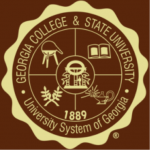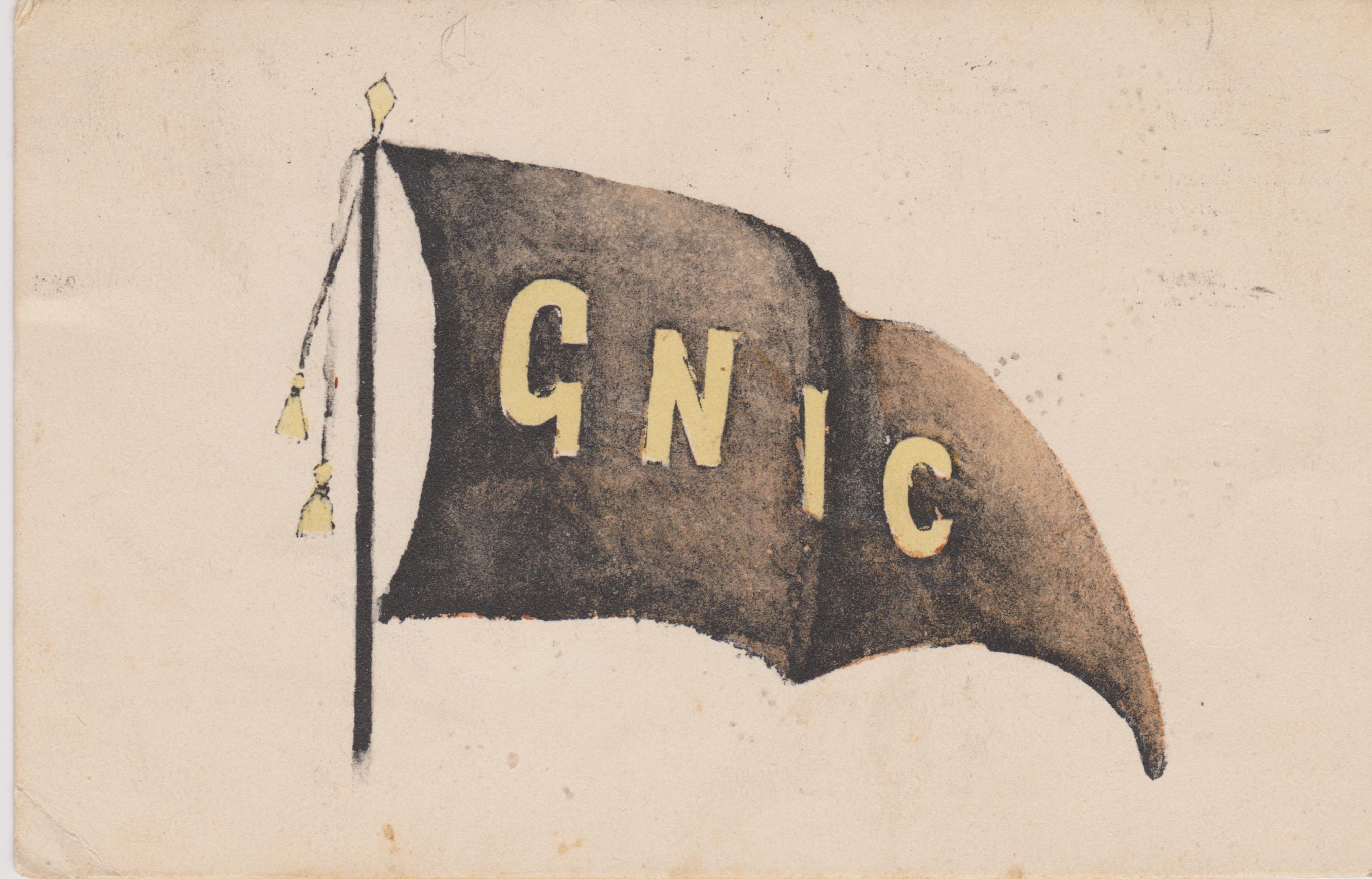Georgia College & State University
Georgia
1889
Formerly “Georgia Normal and Industrial College” and “Georgia State College for Women”



On 16 May 1895 the Intercollegiate Commission on Academic Costume approved a uniform system of caps, gowns, and hoods for American colleges and universities called the “Intercollegiate Code of Academic Costume”. The commissioners intended for every college and university to use a unique arrangement of their colors in their hood lining which would enable an observer to “read” the hood and thereby identify the alma mater of the hood’s owner. The commissioners were initially stymied by the fact that many colleges and universities use the same school colors until Gardner Cotrell Leonard, the Director of the Intercollegiate Bureau of Academic Costume (IBAC) and an advisor to the Commission, suggested that various heraldic divisions of the colors might be employed to create distinctive hood lining patterns that could be individually assigned to each school that chose to follow the Intercollegiate Code.
The chevron was by far the most common heraldic division the IBAC employed to divide the two or three colors in an institution’s hood, but Leonard also used other heraldic devices to avoid assigning duplicate hood linings to colleges and universities that used the same school colors. Beginning in 1895, one of the other heraldic divisions the IBAC used was what they called “[color] and [color]”, most likely referring to a “parti per pale” division whereby the two colors were divided vertically in the lining of the hood with the description being understood as “[left side] and [right side]” of the hood lining.
For example, Georgia State College for Women was assigned a hood lined “dark brown and gold”, according to IBAC lists from 1927 and 1948. The Bureau probably assigned this pattern to the college between 1922 and 1927, and probably intended it to indicate a vertical division between the two colors (per pale). That said, a 1972 IBAC list stated that the colors were divided horizontally (either per chevron, per reversed chevron, or per bar). A list compiled by Kevin Sheard in Academic Heraldry in America (1962) does not help resolve this contradiction; it described the college’s hood lining as “cocoa brown” with a “live medium gold” chevron.
The Intercollegiate Bureau’s original (1920s) hood lining pattern has been restored here.


Students at the Georgia Normal and Industrial College wore brown uniforms for many years after the school was founded in 1889. Later, gold was added to brown to create the college colors, which were understood to symbolize faith in adversity, wisdom, honor, and majesty, according to Our College Colors by Henry L. Snyder (1949).
Citations in the World Almanac (listed by cover date; color information is from the previous year): brown/gold (1934-1935)
